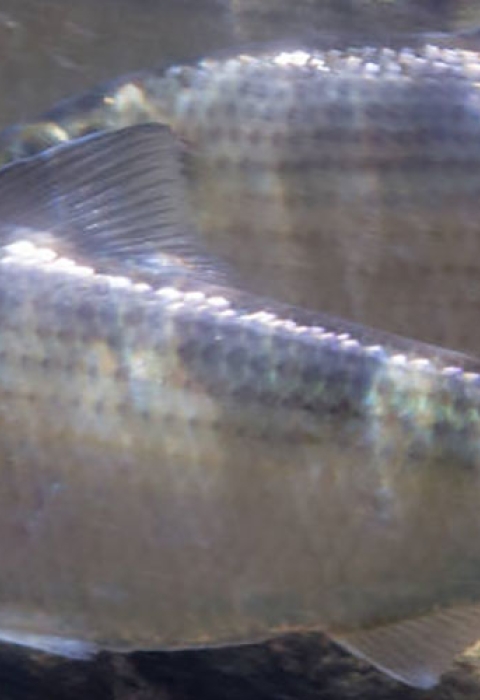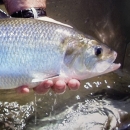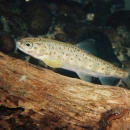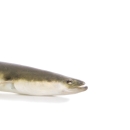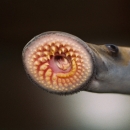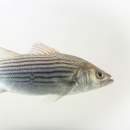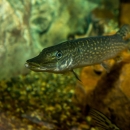Fishways have opened up hundreds of miles of river to migratory fish in the Connecticut River watershed! We know this because we count the number of fish passing through these structures. Knowing how many fish and what species use these fishways helps us make decisions on how to best restore our migratory fishes.
- The Leesville Dam on the Salmon River in Connecticut is monitored only for Atlantic salmon. The Salmon River joins the Connecticut River 18 miles upstream of the Long Island Sound.
- The Rainbow Dam in Connecticut is the first dam on the Farmington River, and is located 8 miles upstream of where the Farmington River joins the Connecticut River. The Farmington River joins the Connecticut River about 57 miles upstream of Long Island Sound.
- The West Springfield dam (formerly called the DSI Dam) in Massachusetts is the first dam on the Westfield River, and is located 4 miles upstream of where the river joins the Connecticut River. Westfield River joins the Connecticut River 75 miles upstream of the Long Island Sound.
- The Holyoke Dam in Massachusetts is the first dam on the mainstem of the Connecticut River, and is 87 miles upstream of the Long Island Sound.
- The Turners Falls Dam fish ladder in Massachusetts is 122 miles upstream of the Long Island Sound; The Vernon Dam fish ladder is located in Vermont, 142 miles upstream of the Long Island Sound.
- The Bellows Falls Dam fish ladder is located in Vermont, 174 miles upstream of the Long Island Sound.
| Fishway, River - State | Data as of | American shad | Alewife | Blueback herring | Atlantic salmon | American eel | Sea lamprey | Striped bass | Gizzard shad | Shortnose sturgeon | Other/ comment |
|---|---|---|---|---|---|---|---|---|---|---|---|
| Rogers Lake-CT | |||||||||||
| Mary Steube, Mill-CT
| - | - | |||||||||
| Mill Pond, Falls-CT (NEW Fishway) | - | - | |||||||||
| Moulson Pond, Eightmile-CT | - | - | - | - | |||||||
| Leesville, Salmon-CT | - | ||||||||||
| StanChem, Mattabesset-CT | - | - | |||||||||
| Rainbow, Farmington-CT | - | ||||||||||
| W. Springfield, Westfield-MA | - | - | - | - | |||||||
| Holyoke, Connecticut-MA | - | - | - | - | - | - | - | ||||
| Easthampton, Manhan-MA | - | ||||||||||
| **Turners Falls-Gatehouse, Connecticut-MA | - | - | - | ||||||||
| Vernon, Connecticut-VT | - | - | - | - | |||||||
| Bellows Falls, Connecticut-VT | - | ||||||||||
Total to basin, only first barrier counts | - | - | - | - | - | - | - | - | - | ||
| Last year totals (2022) | - | - | - | - | - | - | - | - | - |
* CTDEEP will not operate the Rainbow Fish Ladder due its documented poor performance and the lack of suitable downstream fish passage protection measures at the Stanley Works owned dam/project. Fish passage at this project has been the responsibility of the CTDEEP, due to FERC legal rulings and timing of that facilities construction.
** Spillway Fish Ladder - at the dam xx shad, xx sea lamprey; Cabot Station Ladder, base of canal, xx shad, and xx sea lamprey. Note that at Turners Falls Project (Dam/Canal) fish must use one of these two fishways first before having the opportunity to pass the final required ladder (Gatehouse).
A - total collected from 3 eel ramp/traps at Holyoke in 2022
At Holyoke Fish Lift, operations were suspended from high flows/turbidity from 5/2 through 5/7, and reopened on 5/8 with 3,764 American Shad passed that day. Shad counts on the following days have increased nicely- 5/9 (4,082), 5/10 (9,830), and 5/11 (22,663), water temps are seasonally cool (14.6C or 58F) and discharge in main stem and tribs are close to long term averages. Other species, as shown are now also passing there. Historic, long-term annual (daily time step) data shows "approximately" 15% of the annual shad run is passed by 5/11 at HFL. Research by UMass/USGS Research Coop Unit has shown for Blueback Herring a shift in run timing at Holyoke starting and ending earlier. We plan to expand modeling work for the other species as climate change studies have been demonstrating both shifts and compression of these life history "windows", with potential concerns for population resilience among others. My Office's river herring assessment work, showed an increase in Blueback Herring abundance in Wethersfield Cove, rates close to our 10 year average (vs. last year's time series lows). We also sampled fish in Massachusetts tribs at modest rates, with temps still on cool side. The Farmington River produced highly variable rates that over the day increased on each successive downstream run, suggesting fish just moving in (at least for the ~7 km we cover to near its mouth).
.
